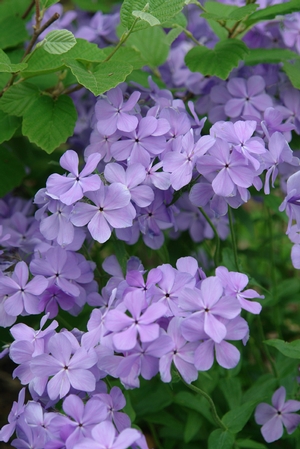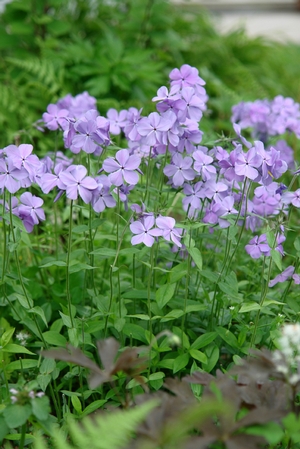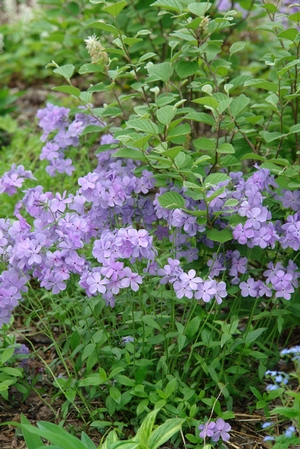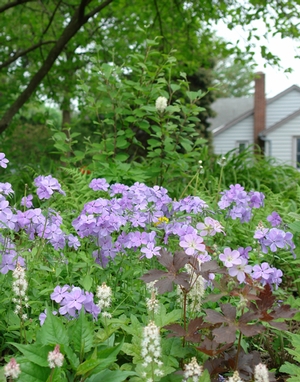
Phlox divaricata 'Blue Moon'
woodland phlox
Selected for outstanding flower color and full petals, 'Blue Moon' bears many fragrant, 5-petaled flowers with the arrival of spring. Enjoy a knee-high sea of elegant, violet-blue flowers that attract hummingbirds & butterflies to your garden. Foliage is lance shaped and medium green. A long-lived, carefree native groundcover.
| SIZE | |
|---|---|
| Phlox divaricata 'Blue Moon' LP32 - 32 per flat | Availability |
| Phlox divaricata 'Blue Moon' - 72 per flat | Availability |
Height12-18 Inches |
Spread8-12 Inches |
Spacing10 Inches |
Bloom ColorBlue |
USDA Hardiness Zone 3-8 |
woodland phlox Interesting Notes
Selected for outstanding flower color and very full flower petals, Phlox divaricata 'Blue Moon' bears many fragrant, 5-petaled flowers with the arrival of spring. Enjoy a knee-high sea of elegant, violet-blue flowers that attract hummingbirds & butterflies to your garden as it blooms from April to May. The foliage is glossy, medium-green, and lance-shaped growing about 6” tall in the garden. A long-lived, carefree native – the foliage rambles through the garden less like a groundcover and more like a part of a lovely patchwork quilt. Selected by Bill Cullina of New England Wildflower Society for its dense flower cover, compact growth, fragrance, and consistent bloom, ‘Blue Moon’ is best when interwoven with Phlox stolonifera, ferns, Carex, and other woodland species to create a tapestry of bloom time, foliage textures, and verdant greens.
Found in rich deciduous woodlands in eastern North America from Ontario to Vermont to Florida and jumping west to South Dakota through to New Mexico, Phlox divaricata prefers humus-rich, moist soils with good drainage. Woodland phlox even ambles near shaded streambanks and along open woods in part shade to dense shade. Best when given good air circulation and free-draining soil, P. divaricata can succumb to powdery mildew if placed in a poor site. For best appearances, cutback spent flower stalks in early summer to rejuvenate foliage and maintain tidy appearance.
At North Creek, Phlox divaricata ‘Blue Moon’ mingles with other woodland favorites in our shade trials, providing early season delight and strong color when the days are still dreary. A rhizomatous plant, ‘Blue Moon’ spreads slowly over time. We encourage planting this woodland native anywhere it can be observed, along footpaths in shade gardens or along perennial borders. Do not cut back plant in fall—this could result in winter loss. Trims are best done after flowering in late spring.
Phlox divaricata 'Blue Moon' Growing and Maintenance Tips
P. divaricata prefers bright shade with organic, rich, moist, well-drained soils. These slowly spreading stemmed flowers can be found in rich woods and along stream banks. Give good air circulation to reduce growth of powdery mildew. Benefits from occasional fertilization. May be propagated by terminal shoot or root cuttings. Cut back after first bloom to promote second round of growth. Makes an excellent addition to the perennial, naturalized area or rock garden.
Key Characteristics & Attributes








Additional Information
|
Soil Moisture Needs
|
Green Infrastructure
|
Wetland Indicator Status
|
Plug Type
|
||||||||||
|
Attributes
|
Season of Interest (Flowering)
|
Propagation Type
|










